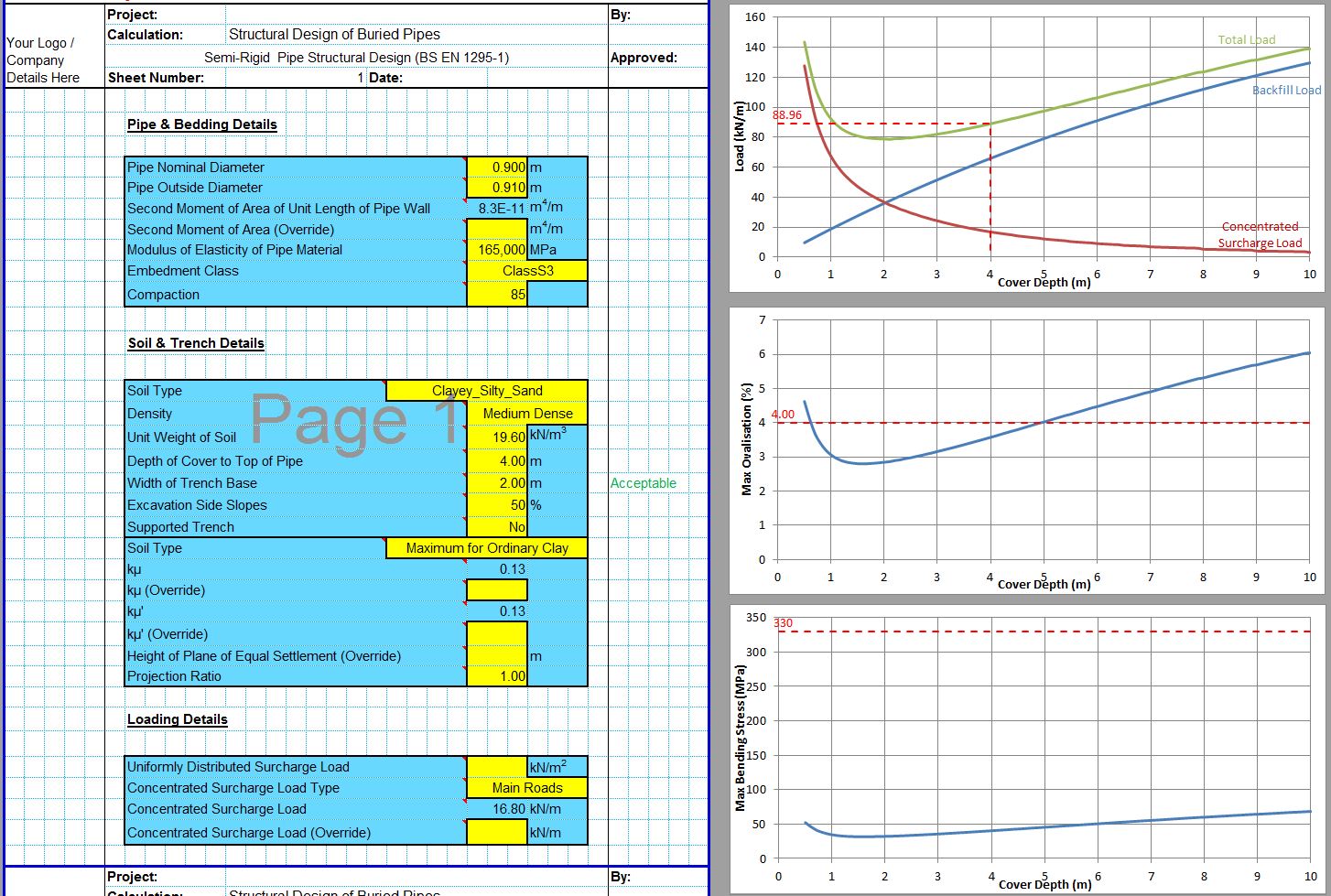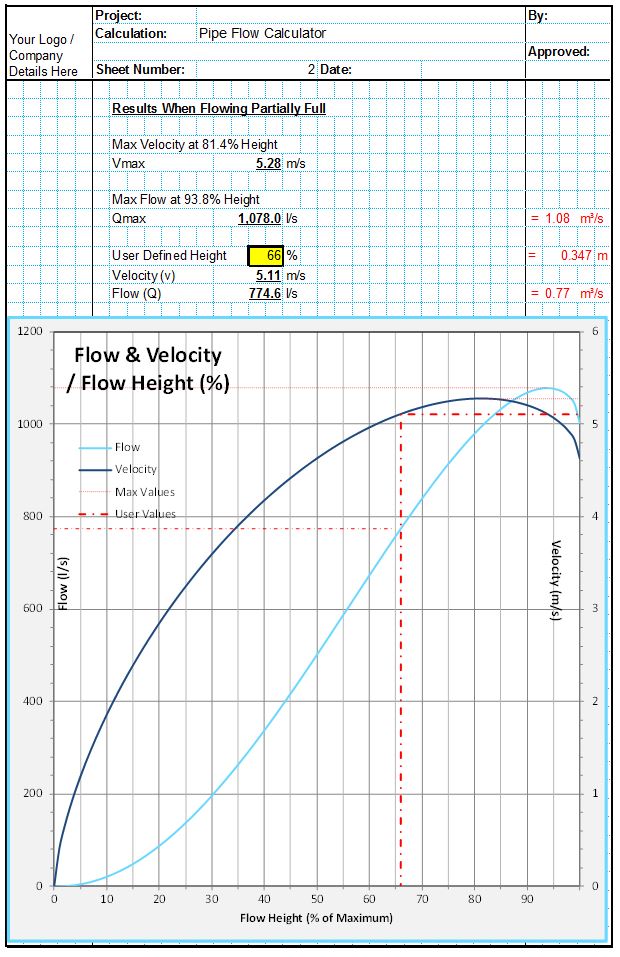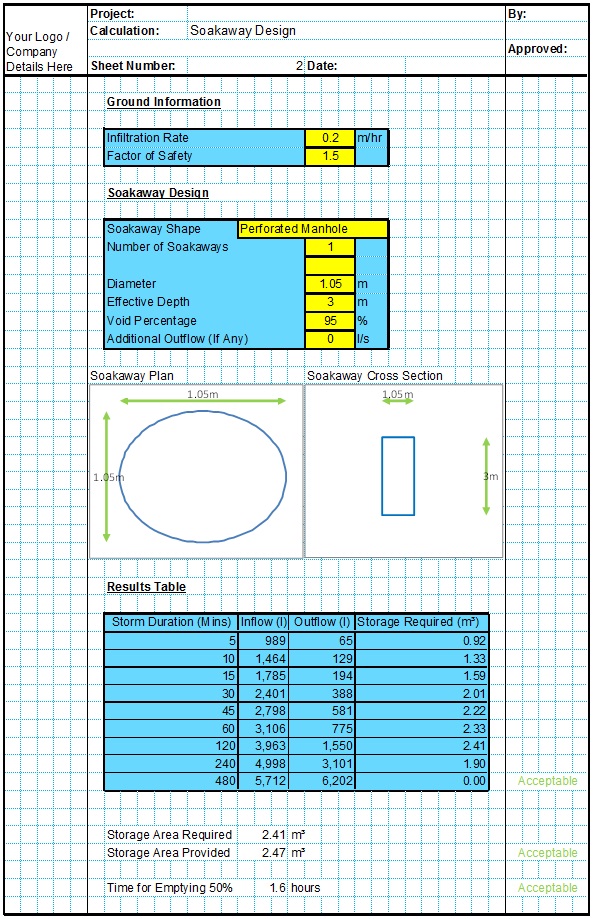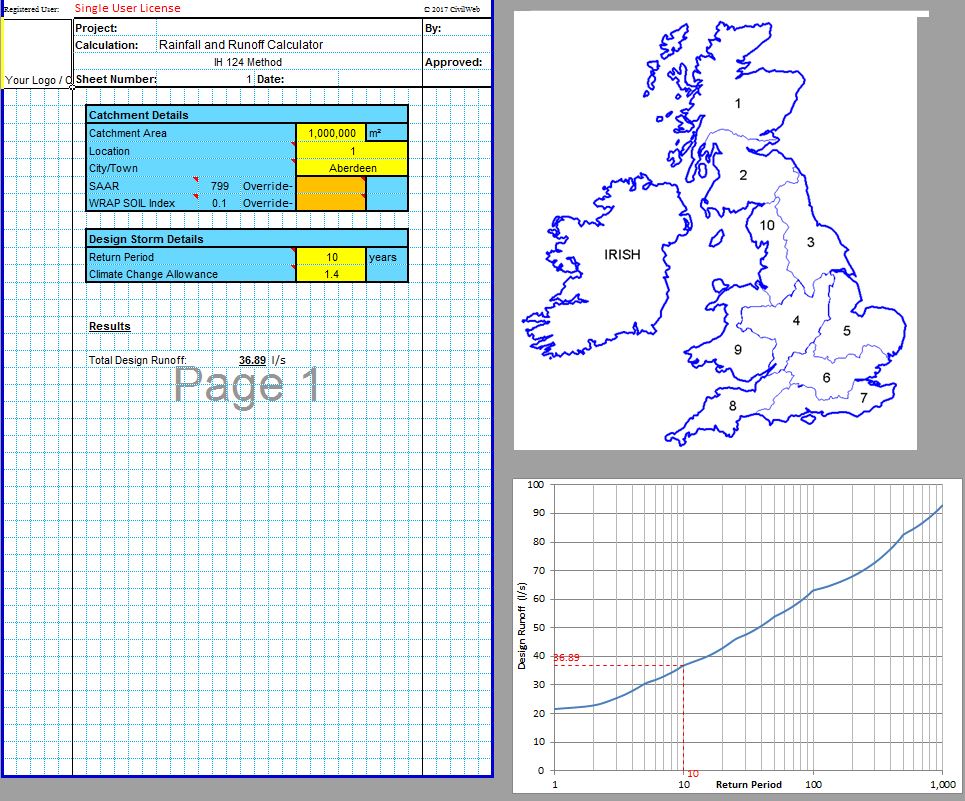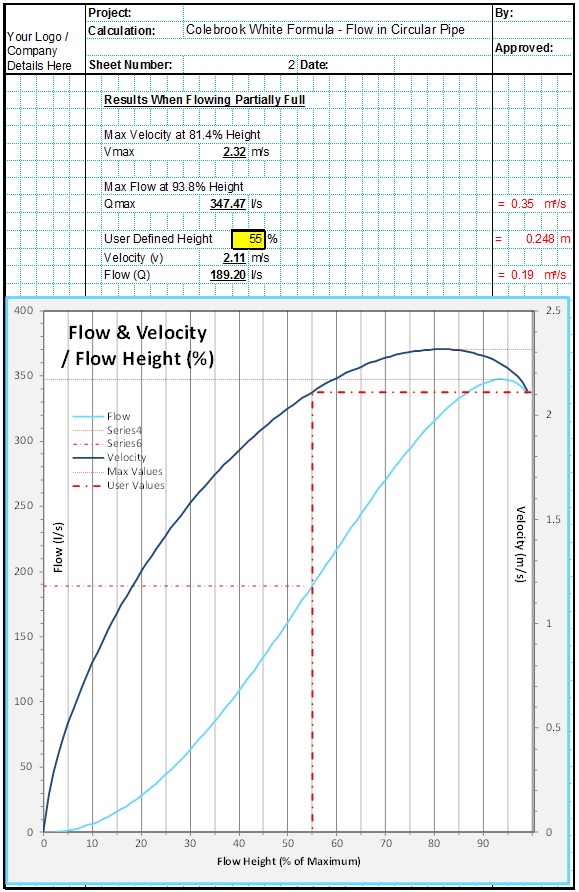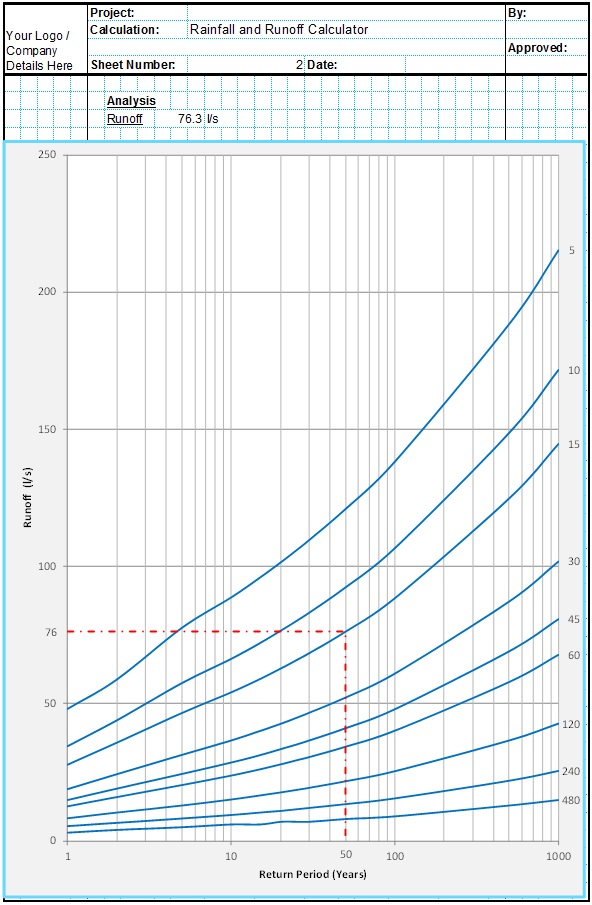French drain depth is not typically included as a parameter in french drain design, it is usually assumed that the french drain will be installed around a minimum depth value. French drain depth does not typically influence the hydraulic design of the drain. It will however determine the structural design of the french drain. It is important that the french drain is installed at sufficient depth to prevent large imposed surface loads from damaging the perforated pipe. The depth can also impact on the french drains ability to remove pollutants from the runoff water.
French Drain Depth (Hydraulic Considerations)
The french drain trench depth is not a critical hydraulic performance parameter specified during the french drain design process. This is because runoff water is assumed to travel freely through the filter material vertically. As this distance is typically quite short, the french drain depth is not considered.
Only where the french drain acts as an infiltration device will the depth of the french drain become a consideration in the hydraulic design. The CivilWeb French Drain Design spreadsheet assumes that there is no infiltration of runoff waters into the surrounding soils. If infiltration is desired, the CivilWeb Soakaway Size Calculator spreadsheet can design this as an infiltration trench.
The only way that french drain depth will influence the design is where the french drain grade is affected. It may be necessary to carefully specify the french drain trench depth in areas where the grade of the pipe is critical for the perforated pipe design. In some cases of very flat land or where the french drain is designed to flow against the contours of the ground, it may be necessary to install the french drain at a shallow depth at the top of the run and slowly increase the depth in order to achieve the required french drain grade.
The french drain grade is included in the CivilWeb French Drain Design spreadsheet to ensure that the perforated pipe design is adequate for the anticipated runoff flows. Where the grade is critical it is important that trench depths are checked as part of the french drain installation process.
Some kinds of perforated french drains and fin drains may depend on a certain depth of geocomposite material for hydraulic conveyance of the runoff water. This is particularly the case where there is no carrier pipe included with the fin drain. Further details can be found in our fin drain post.
French Drain Depth (Structural Considerations)
The french drain depth is more important for structural reasons than for hydraulic reasons. The forces imparted on the french drain from imposed surface loads are dependent on the depth of the french drain. This is because imposed surface loads are dispersed into the surrounding soils relatively quickly. Even very high surface loadings such as from heavy highway traffic become quite manageable at only 1 or 2 metres depth. This is particularly the case for french drains as the perforated pipes tend to be small in diameter and flexible so they do not attract large loads.
In general french drains are not designed for large imposed loads such as HGV axle loads. In rare cases where large imposed loads are expected the french drain should be designed in the same way as any circular pipe. Note the filter material will also need to be designed to accommodate large loads.
The design of circular drainage pipes can be undertaken using a design spreadsheet such as the CivilWeb Buried Pipe Design Spreadsheet. There is a great deal of guidance on our site regarding the structural design of drainage pipes. In rare cases where a shallow french drain pipe is expected to be subjected to large imposed surface loads, these can be designed using the same spreadsheet.
French Drain Minimum Depth
In order to prevent french drains from being damaged by accidental loading, for example a HGV running off a highway onto a french drain, french drains are typically installed at a similar minimum depth to standard drainage pipes.
Sewers for Adoption provides rough guidance for drainage pipes as below;
- 350mm for domestic gardens, paths and areas where vehicular traffic is impossible
- 500mm for domestic driveways, parking areas for cars only where large (over 7.5T) vehicle access is impossible
- 900mm for parking areas where HGVs or refuse collection trucks may occasionally travel
- 900mm for agricultural land or public spaces
- 1,200mm for highways or parking areas with unrestricted access for heavy vehicles
These minimum cover depths are for guidance only and site specific design calculations should be undertaken where large or unusual loads are expected.
French Drain Water Quality
It is also recommended that at least 500mm of filter material is provided in order to offer some level of pollutant removal as the runoff percolates through the filter material. This is particularly the case where some infiltration of the runoff water is anticipated into surrounding soils through a permeable french drain filter fabric. The design of infiltration trenches is included in the CivilWeb Soakaway Design Calculator spreadsheet.
French drain filter material has been shown to be effective for the removal of certain pollutants but the water must be forced into contact with a certain amount of filter material before this effect can take place.
The water quality effects of a certain depth of filter material may not be required or even desired in some cases. Further information is available in our French Drain Water Quality post.
Get your copy of the CivilWeb French Drain Design spreadsheet now for only £20.
Or why not bundle with the CivilWeb Soakaway Design spreadsheet for only £5 extra?
Or save £50 by buying our full Drainage Design Suite including all our drainage design spreadsheets.
Download Free Trial Version
To try out a fully functional free trial version of this software, please Click Here or enter your email address below to sign up to our newsletter.
